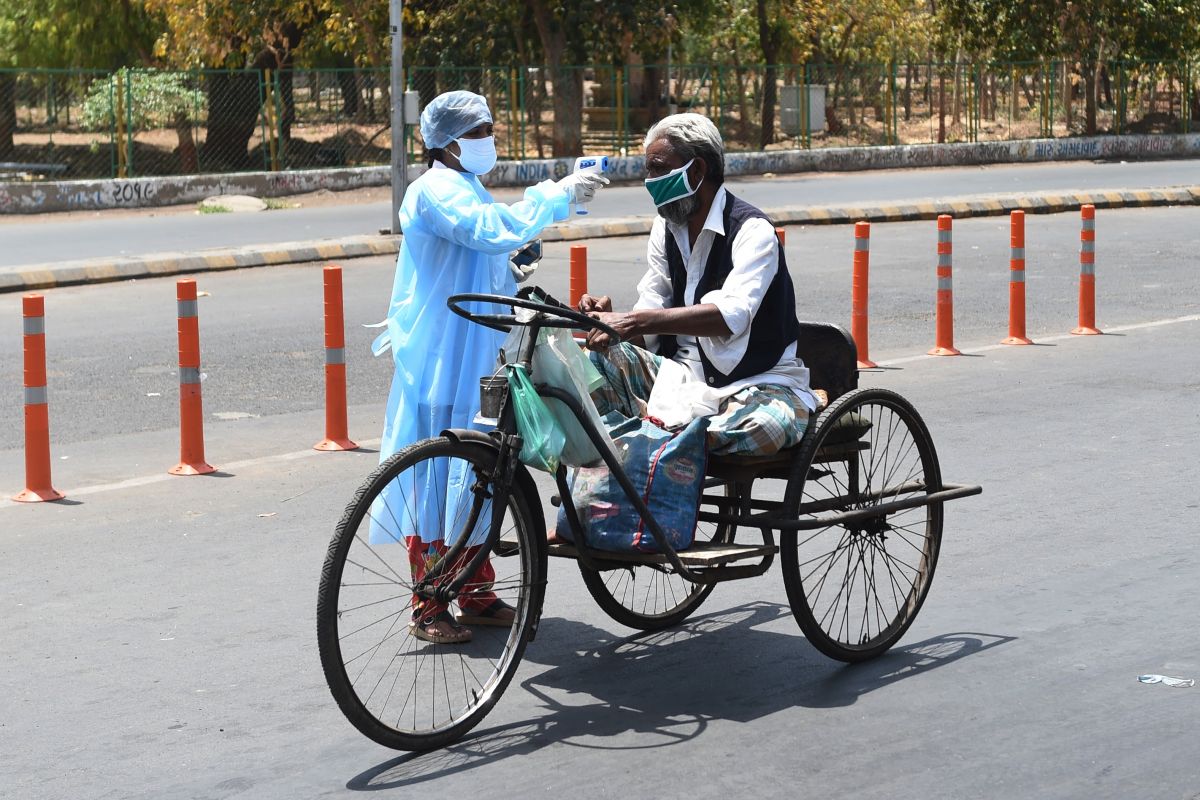Pacific Outreach~II
India is cognizant of the fact that Pacific Island nations are strategically located in the Pacific Ocean, connecting Asia with the Americas.
The IMF on Thursday also projected that growth in Asia is expected to stall at zero percent in 2020.

A health worker checks the body temperature of a man with mobility impairment during a government-imposed nationwide lockdown as a preventive measure against the COVID-19 coronavirus in Ahmedabad on April 8, 2020. (Photo by SAM PANTHAKY / AFP)
Describing the COVID-19 pandemic as “a crisis like no other,” IMF head Kristalina Georgieva has said the international lender plans to use all its USD 1 trillion lending capacity to support countries across the world battling the deadly outbreak. An unprecedented 102 of the International Monetary Fund’s 189 member nations are seeking assistance from the organization to combat the coronavirus, the lending agency’s Managing Director Georgieva said.
“It is a crisis like no other. In scope, we are now in the worst recession since the Great Depression. We are experiencing a 3 per cent contraction of global GDP, and 170 countries are going to see income per capita falling versus what we expected three months ago for 160-for them to go up,” Georgieva told reporters at the start of the annual spring meeting of IMF and the World Bank here.
According to the Johns Hopkins University data, over 2 million people are infected by the virus and more than 138,000 people have died of the disease globally.
Advertisement
In view of coronavirus crisis, the spring meeting is being held virtually– the first one in the history of IMF and the World Bank. For the first time in the history of the IMF, epidemiologists are providing inputs for its macroeconomic projections, and they”re telling the IMF it may get even worse if the virus continues its round for longer, or if vaccines and treatments are slow to come around, the IMF Managing Director said.
Georgieva said that the IMF is proposing to deploy the full USD 1 trillion lending capacity to support countries dealing with the tremendous challenge this crisis presents. It is also proposing to double emergency financial assistance.
“We started aiming for USD 50 billion, we are now at USD 100 billion, and in one short month, the month of April, our Board will have approved half of what is now exceptionally high demand for these resources, 102 countries asking for it. Already we disbursed for 15 in a record short time,” she said.
The IMF Board has already approved debt relief for 25 of its poorest members. “We will need to raise resources, and I”m so glad that during the G20 discussion this morning there was unanimous support for the Fund to do more, especially for those who need us more,” she said.
“It is also very clear, that there are countries that need more support. And for those, we are determined to raise more concessional resources. We have full support from the membership, to go on the offensive, to raise more capacity for concessional funding from the IMF. Our target is to triple what we do for these countries,” she said in response to a question.
The IMF, she said, is also very keen to explore other avenues, that would allow it now, in the urgency of the situation, to do more. There is an emerging consensus that existing SDRs could be deployed to help in developing countries, she said. “And we will assess, as the crisis evolves, where we are. The membership is very engaged, and very supportive,” she said.
“We now have more than 30 countries applying for emergency financing. We are prioritizing rapidly responding to these requests, recognizing how critical this lifeline is for them. We are also very keen to see what more can be done,” the IMF Managing Director said.
The IMF on Thursday also projected that growth in Asia is expected to stall at zero percent in 2020. “This is the worst growth performance in almost 60 years, including during the Global Financial Crisis (4.7 percent) and the Asian Financial Crisis (1.3 percent). That said, Asia still looks to fare better than other regions in terms of activity.”
Advertisement